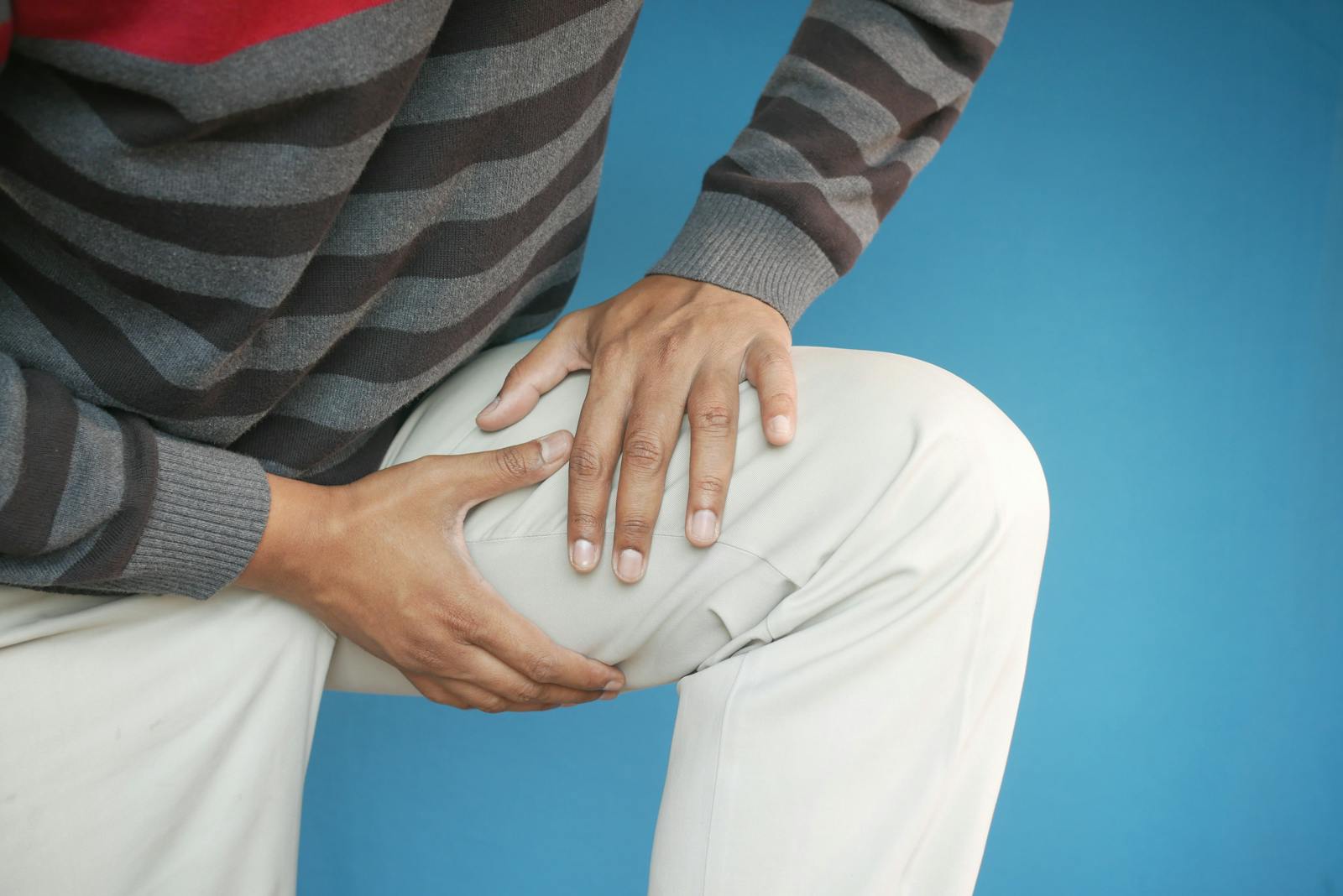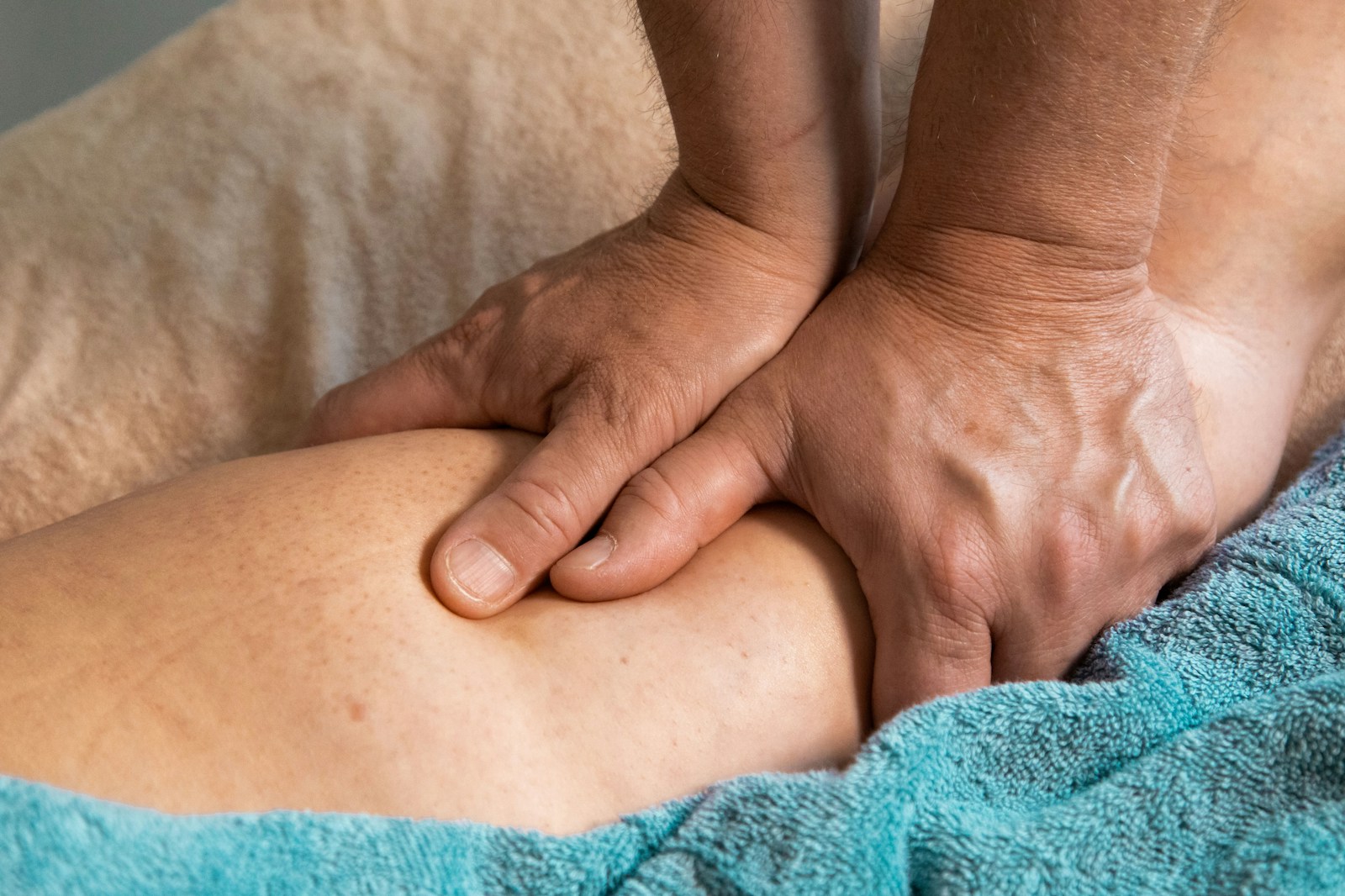The phenomenon of leg weakness, a notable diminution in the strength and agility of the lower limbs, is an intriguing subject, inviting a thorough analysis of its various causative factors and potential solutions. Whether it’s linked to neurological conditions, the natural aging process, or nutritional deficits, the impacts on a person’s mobility and overall quality of life can be significant. It is essential to examine the symptomatic manifestations, diagnostic approaches, and management strategies for leg weakness, as these insights can direct us towards effective remedial measures and preventative actions. Let’s explore this topic further.
Understanding Leg Weakness
Delving into the phenomenon of leg weakness, it becomes crucial to understand this condition as a noticeable reduction in the strength and agility of one’s lower extremities, often stemming from numerous health and lifestyle factors. The etiology of this symptom could be as varied as neurological disorders to the mere aging process. However, two factors worth specific attention are the impact of diet and emotional health on the manifestation of this condition.
The ‘leg weakness diet’ is a term referring to nutritional deficiencies that may contribute to muscle weakness. These include a lack of essential nutrients such as vitamin D, calcium, and potassium, all necessary for maintaining muscle health. A well-balanced diet can help provide these nutrients, thus preventing or minimizing leg weakness.
The emotional impact of this symptom should not be underestimated either. Persistent leg weakness can lead to frustration, anxiety, and a diminished quality of life, thereby creating a cyclical effect, where the emotional stress further exacerbates the condition. Understanding the comprehensive nature of leg weakness is therefore crucial in devising effective interventions and management strategies.
Common Symptoms Associated
In conjunction with leg weakness, several other symptoms often manifest, providing a more thorough view of this complex condition. Leg numbness causes, for instance, can be multifactorial, ranging from nerve damage, systemic diseases such as diabetes, to spinal cord abnormalities. Numbness typically manifests as a loss of sensitivity or altered physical sensation, which can be concurrent with leg weakness and have a substantial impact on an individual’s mobility.
Vitamin deficiency effects can also play a vital role in the symptomatology of leg weakness. Deficiencies in essential vitamins, particularly Vitamin B12 and Vitamin D, can lead to a spectrum of neuromuscular symptoms. Vitamin B12 deficiency, for instance, can result in peripheral neuropathy, which can present as leg weakness, numbness, or even a burning sensation. Vitamin D deficiency, on the other hand, can cause muscle weakness and pain, exacerbating the existing symptoms.
It’s important to understand that these symptoms are not exclusive to leg weakness and can arise from various health conditions. Therefore, a thorough clinical evaluation is necessary to identify the precise cause and devise an effective treatment plan. Careful monitoring of symptoms and early intervention can significantly enhance the prognosis and improve the quality of life.
Role of Aging in Leg Weakness
As individuals progress in age, the phenomenon of leg weakness often becomes more prevalent, attributable to various age-related physiological and structural changes in the neuromuscular system. The degeneration of motor neurons, loss of muscle mass and strength, also known as sarcopenia, are common occurrences in aging bodies, contributing considerably to leg weakness.
In the context of aging nutrition, appropriate intake of proteins, vitamins, and minerals is paramount for maintaining muscle health. Unfortunately, with age, nutrient absorption capacity diminishes, exacerbating muscle weakness. Additionally, older adults often have dietary patterns that lack essential nutrients, further compounding the issue.
Sedentary risks also play a critical role in leg weakness with age. Prolonged physical inactivity leads to a decrease in skeletal muscle mass and strength, a prerequisite for effective leg function. In fact, studies have shown a direct correlation between sedentary behavior and leg weakness in the elderly.
In essence, aging introduces a myriad of factors that contribute to leg weakness. However, with suitable nutritional interventions and active lifestyle choices, the severity of this condition can be effectively managed. It’s worth noting that these discussions are separate from the impact of overexertion on legs, which is a topic of its own.
Impact of Overexertion on Legs
Overexertion of the legs can lead to a plethora of symptoms, including muscle fatigue, cramps, and in severe cases, mobility issues. Understanding the physiological responses to excessive strain is important in order to prevent such outcomes. In the following discussion, we will scrutinize these symptoms in detail, and also present preventative measures to maintain peak leg health.
Symptoms of Overexertion
How does overexertion manifest in the form of leg weakness, you might ask? Overexertion primarily results in muscle fatigue, causing a decrease in muscle strength and a sensation of weakness in the legs. This is often accompanied by muscle cramps, tremors, and potentially localized swelling. Overexertion recovery is an essential process. This involves rest, proper nutrition, and importantly, hydration. The significance of hydration cannot be overstated. Water aids in maintaining blood volume, providing nutrients to muscles, and facilitating waste removal from metabolic processes. Dehydration exacerbates the symptoms of overexertion, leading to increased weakness and fatigue. Identifying these symptoms early can lead to prompt intervention, minimizing the impact on leg strength and overall physical performance.
Preventing Leg Fatigue
Mitigating the detrimental effects of leg fatigue due to overexertion requires an understanding of effective prevention strategies, which hinge on careful physical management and adherence to healthful practices. Observing balanced nutrition can rectify nutritional deficiencies that exacerbate fatigue. Consuming foods rich in essential vitamins, minerals, and proteins can bolster muscle strength and stamina. Similarly, maintaining hydration is vital given its pivotal role in muscle function and energy production. Dehydration can trigger muscle fatigue as it impairs the body’s ability to regulate heat, forcing the heart to work harder. Ultimately, preventing leg fatigue necessitates a symbiotic approach that incorporates dietary improvements and adequate hydration, along with controlled physical activity. This approach can effectively mitigate overexertion and its subsequent impact on leg fatigue.

Neurological Causes of Weakness
In understanding the neurological origins of leg weakness, it is crucial to contemplate the intricate network of nerves that control leg function and movement. Neurological disorders such as peripheral neuropathy and spinal cord injuries can greatly impact this complex system, leading to weakness in the legs.
Peripheral neuropathy, a condition resulting from damage to the peripheral nerves (nerves beyond the brain and spinal cord), commonly causes weakness, numbness, and pain in the legs. This disorder disrupts the normal functioning of these nerves, leading to impaired muscle movement and sensation. On the other hand, spinal cord injuries can cause leg weakness due to disruptions in the communication between the brain and parts of the body below the level of injury. The severity of leg weakness depends on the extent of the spinal cord injury; complete injuries often result in total loss of muscle function.
Both conditions underscore the importance of the nervous system in leg functionality. Hence, prompt diagnosis and treatment of these neurological disorders are essential in managing leg weakness effectively. The complexity of these conditions requires a holistic approach in their management, highlighting the need for a multidisciplinary medical team.
Muscular Disorders and Leg Weakness
While neurological conditions can greatly affect leg strength, muscular disorders also play an important role in contributing to leg weakness. These disorders often stem from a variety of causes including genetic influences, dietary impact, and environmental factors.
- Genetic Influences: Certain muscular disorders like Duchenne muscular dystrophy and Becker muscular dystrophy are inherited genetic conditions. These disorders cause progressive muscle weakness as they affect the muscle proteins, leading to the deterioration of muscle fibers and subsequently, weakness in the legs.
- Dietary Impact: The nutrition we intake can greatly affect our muscle health. Lack of essential nutrients such as vitamins D and E, and certain types of B vitamins can lead to muscle weakness. Similarly, deficiency in minerals like potassium and calcium, which are important for muscle function, can also contribute to leg weakness.
- Environmental Factors: Chronic exposure to toxins, certain medications, and prolonged immobilization can also lead to muscular disorders and subsequently, leg weakness.
Lifestyle Factors Contributing to Weakness
Several lifestyle factors, including physical inactivity, poor diet, and high-stress levels, can greatly contribute to the development and progression of leg weakness.
Physical inactivity can lead to muscle atrophy, a condition characterized by the decrease in muscle mass, which directly impacts leg strength. Regularly engaging in physical activities that target the lower body can help maintain muscle mass and strength, reducing the risk of leg weakness.
Dietary impacts on leg weakness cannot be overlooked. Poor nutrition, particularly diets low in protein, vitamin D, and other essential nutrients, can lead to muscle loss and weakness. These nutrients are crucial for muscle health and function. Consuming a balanced diet, rich in lean proteins, fruits, vegetables, and whole grains can support muscle strength and overall health.
High-stress levels, another substantial lifestyle factor, contribute to leg weakness through the mental stressors they impose. Prolonged stress can trigger the body’s fight-or-flight response, causing a constant release of stress hormones, which eventually leads to physical exhaustion and weakness. Regular stress management, such as meditation or yoga, can help maintain physical health and reduce the likelihood of stress-induced leg weakness.
Diagnostic Approaches for Leg Weakness
In the evaluation of leg weakness, a systematic approach is necessitated, beginning with the identification of common causes. This is followed by the implementation of pertinent medical tests to ascertain the precise etiology of the weakness. Consequent to an accurate diagnosis, the exploration of available treatment options can then be pursued.
Common Causes of Weakness
One must consider a range of potential etiologies when diagnosing the common causes of leg weakness, given its multifactorial nature.
- Leg Infections: A variety of bacterial, viral, or fungal infections can infiltrate the muscle tissue or peripheral nerves, potentially causing weakness or even paralysis in the legs.
- Dietary Influences: Certain dietary deficiencies, particularly of vitamins B1, B6, B12 and E, can lead to peripheral neuropathy and subsequent leg weakness.
- Neurological Conditions: Diseases like Multiple Sclerosis, Parkinson’s disease, or stroke often present with leg weakness as a primary symptom due to damage to the central nervous system.
In-depth understanding of these causes can aid in accurate diagnosis, helping to make sure targeted and effective treatment strategies are implemented.
Medical Tests for Diagnosis
To accurately diagnose leg weakness, a wide range of medical tests may be employed, each designed to evaluate different aspects of neuromuscular function and general health. Advances in diagnostic technology have expanded the array of tests available, enabling more precise identification of underlying conditions. For instance, electromyography can assess nerve and muscle health, while magnetic resonance imaging (MRI) can visualize soft tissues and detect structural anomalies. Blood tests can reveal systemic diseases or nutrient deficiencies. Additionally, a psychological impact assessment may be conducted to understand the mental toll of leg weakness, which can greatly influence the patient’s quality of life. Such detailed diagnostic approaches are essential for devising appropriate treatment strategies, the discussion of which is beyond the scope of this current subtopic.
Treatment Options Available
Exploring the wide range of treatment options for leg weakness requires a thorough understanding of the diagnosis, considering the specific underlying conditions, severity of symptoms, and patient’s overall health status.
- Physical Therapy: This can improve muscle strength and coordination, potentially alleviating weakness. It often includes targeted exercises and stretches.
- Dietary Changes: Consuming a balanced diet rich in essential nutrients and vitamins can aid in muscle health. A deficiency in Vitamin D, for instance, can cause muscle weakness.
- Psychological Support: The psychological impact of living with leg weakness can be substantial. Therefore, mental health support, such as counseling or therapy, may be beneficial.
These options, alone or combined, can help manage leg weakness. However, treatment efficacy varies greatly between individuals due to a multitude of factors. Hence, personalization of treatment plans is important.
Treatment Options for Weak Legs
A variety of treatment options are available for those experiencing weakness in their legs, ranging from physical therapy exercises to pharmacological interventions. One such option is the utility of leg braces. These devices can provide important support, helping to stabilize the affected limb and promote correct movement. Scientific studies have shown that consistent use of leg braces can greatly reduce symptoms of weakness and enhance mobility.
Another important aspect of treating leg weakness is dietary influence. Nutritional deficiencies can often exacerbate symptoms, and correcting these imbalances can bring about substantial improvements. For instance, lack of vitamin D, calcium, and magnesium can result in muscle weakness and fatigue. Therefore, a diet rich in these nutrients can contribute to the improvement of leg strength.
Pharmacological interventions may also be necessary, depending on the underlying cause of the weakness. Such treatments would typically involve medications to manage conditions such as diabetes, peripheral neuropathy, or other neurological disorders.
Strengthening Exercises for Legs
To address the issue of leg weakness, we now turn our focus to the role of strengthening exercises for legs, a strategy that has been underscored by numerous research studies. We will analyze effective leg workout routines, examining the scientific principles underpinning their success. Additionally, we will provide a detailed discourse on tips for safe training, underlining the importance of executing these exercises correctly to maximize benefits and minimize injury risk.
Effective Leg Workout Routines
Building strong leg muscles not only enhances overall body strength but also greatly decreases the risk of leg weakness; hence, it is important to explore effective leg workout routines and strengthening exercises for legs. Proper leg nutrition and injury recovery are essential for maintaining peak leg strength.
- Squats: Squats are a compound exercise that targets the quadriceps, hamstrings, and glutes. This exercise also activates the core and lower back muscles, promoting overall body stability.
- Lunges: Lunges work the same muscles as squats but in a different way, which can aid in injury recovery and prevention.
- Calf Raises: This exercise isolates the calf muscles, which are critical for walking and running activities.
These exercises, when performed regularly and correctly, can greatly improve leg strength, thereby reducing the risk of leg weakness.
Tips for Safe Training
When starting a regimen of leg strengthening exercises, it’s vital to follow specific safety guidelines to guarantee maximum benefit while minimizing the risk of injury. An analytical approach to leg injuries prevention involves integrating best biomechanics, adequate rest intervals, and systematic progression of load. Detailed planning mitigates the risk of strains, sprains, and stress fractures.
Scientific evidence also highlights the profound nutrition impact on muscle recovery and growth. A balanced, protein-rich diet aids in tissue repair and strength development. Simultaneously, hydration sustains electrolyte balance, critical for muscle contraction.
The importance of warming up and cooling down cannot be overstated, both serving to prepare the body for, and recover from, intense physical activity. Ultimately, safe training strategies fortify leg muscles, combat weakness, and promote overall health.
Tips for Preventing Leg Weakness
Understanding the preventative measures for leg weakness, a holistic approach is needed that includes regular exercise, a balanced diet, and timely medical check-ups. A deeper analysis of each component can further elucidate our understanding.
- Regular Exercise: The importance of regular physical activity cannot be overstated. Exercise improves muscle strength and endurance, preventing the onset of leg weakness. Strength training specifically targets the muscles in the legs, thereby reducing the risk of weakness.
- Balanced Diet (Dietary Influence): A diet rich in proteins, vitamins, and minerals is essential for maintaining muscle health. Proteins are the building blocks of muscles while vitamins and minerals are involved in numerous metabolic reactions that promote muscle function.
- Timely Medical Check-ups: Regular medical screening can detect early signs of diseases or conditions that might lead to leg weakness. Early diagnosis and treatment can prevent muscle wasting and maintain leg strength.
The Hydration importance cannot be overlooked as well. Adequate hydration is essential for optimal muscle function. Dehydration can cause muscle cramping and fatigue, leading to perceived weakness.
Frequently Asked Questions
Can Certain Medications Cause Leg Weakness?
Yes, certain medications can induce leg weakness. This can occur due to conditions like Medication Induced Myopathy or Drug Related Neuropathy, where the drug negatively affects muscle or nerve function respectively. Always consult a healthcare provider for advice.
Does Poor Nutrition Contribute to Leg Weakness?
Yes, poor nutrition can contribute to leg weakness. Nutritional deficiencies can impact muscle function and strength. Additionally, the exercise impact on muscles may be reduced without proper nutritional support, leading to further weakness.
How Does Leg Weakness Affect Overall Mobility?
Leg weakness greatly hampers overall mobility due to muscle atrophy effects and the impact of neurological disorders. It can limit physical activity, reduce balance and coordination, and increase the risk of falls and injuries.
What Is the Role of Hydration in Preventing Leg Weakness?
Hydration benefits overall muscle function. Adequate fluid intake maintains electrolyte balance, critical for muscle contraction and nerve signaling. Dehydration dangers include muscle cramping and fatigue, potentially leading to perceived weakness. Therefore, hydration is crucial for preventing muscle weakness.
Can Leg Weakness Be a Symptom of Heart Conditions?
Yes, leg weakness can be a symptom of heart conditions. Insufficient cardiovascular exercise and lack of leg strength training could worsen this, as both are vital for maintaining good circulatory health and muscle strength.


